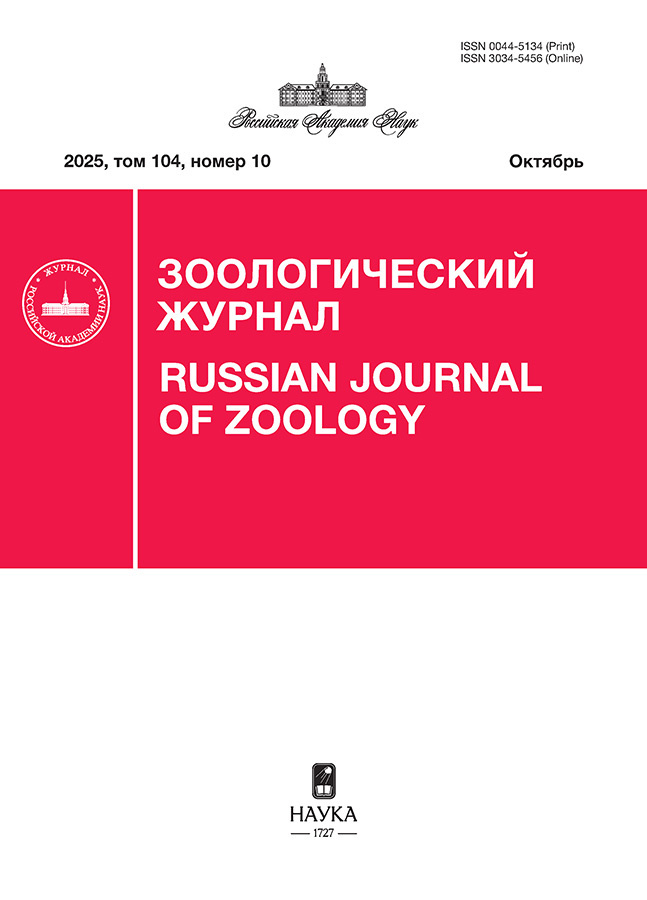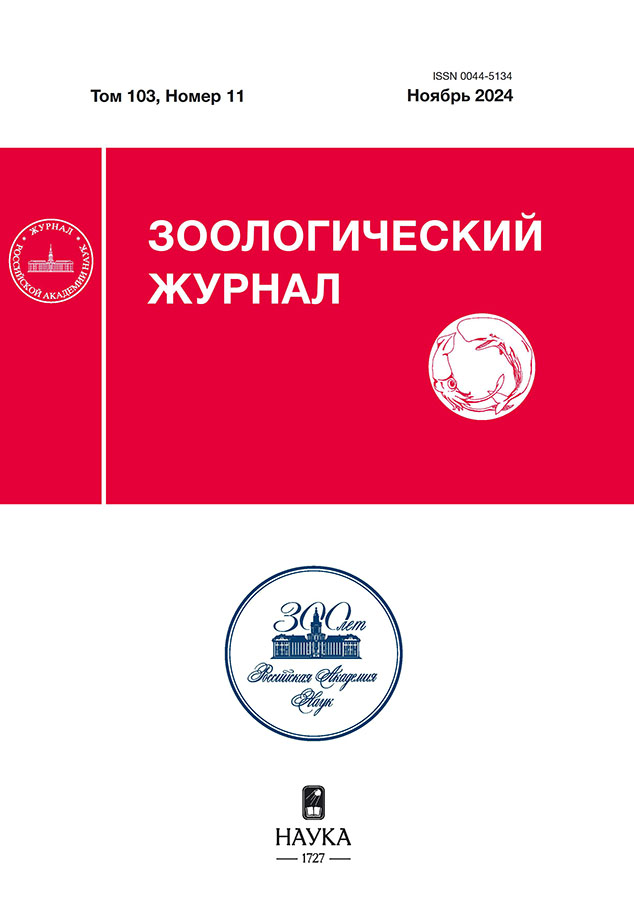Taxonomic diversity and biogeography of the snakes in the aralo-caspian basin
- Authors: Milto K.D.1
-
Affiliations:
- Zoological Institute, Russian Academy of Sciences
- Issue: Vol 103, No 11 (2024)
- Pages: 75–83
- Section: ARTICLES
- URL: https://rjdentistry.com/0044-5134/article/view/654240
- DOI: https://doi.org/10.31857/S0044513424110041
- EDN: https://elibrary.ru/tkzrpu
- ID: 654240
Cite item
Abstract
Snake diversity of the Aralo-Caspian basin includes 61 species in 8 families, being composed of local faunas of the Northern Caspian Depression, the Greater Caucasus and Ciscaucasia, the Lesser Caucasus and Transcaucasia, the Alborz and Turkmeno-Khorasan mountains, the Aralo-Caspian Isthmus, the deserts and mountains of Middle Asia and the plains of the Aral Sea region. Regions with the richest snake diversity are Alborz, Turkmeno-Khorasanian Mountains and Transcaucasia. The snake fauna is composed of 25 biogeographic groups; all diversity of the distribution patterns is described by 10 main chorotype groups and 36 basic chorotypes. The most common element is Mediterranean (12 species), as well as Armeno-Iranian (7 species). Delta-diversity grows in the latitudinal direction, from the plains of the Aral Sea region and the North Caspian Lowland to the mountain systems of the Iranian Plateau. The level of species endemism is 25%. Six of the fourteen endemics live in the Alborz Mountains.
Keywords
Full Text
About the authors
K. D. Milto
Zoological Institute, Russian Academy of Sciences
Author for correspondence.
Email: coluber@zin.ru
Russian Federation, Universitetskaya emb., 1, St. Petersburg, 199034
References
- Anderson S.C., 1968. Zoogeographic analysis of the lizard fauna of Iran // The Cambridge History of Iran 1. Fisher W.B. (Ed.). Cambridge: Cambridge University Press. P. 305–371.
- Ataev Ch., Rustamov A.K., Shammakov S., 1994. Reptiles of Kopetdagh // Biogeography and Ecology of Turkmenistan. Fet V., Atamuradov K.I. (Eds). Dordrecht–Boston–London: Kluwer Academic Publishers. P. 329–350.
- Bannikov A.G., Darevsky I.S., Ishchenko V.G., Rustamov E.A., Szczerbak N.N., 1977. A guide to amphibians and reptiles of the fauna of USSR. Moscow: Prosveshchenie. 414 p. [in Russian]
- Bobrov V.V., Aleshchenko G.M., 2001. Scheme of herpetogeographic zoning of Russia and neighboring countries // The Problems of Herpetology. Proceedings of the 1th Meeting of the Nikolsкy Herpetological Society 4–7 December 2000. Pushchino–Moscow: MSU. P. 31–34 [in Russian]
- Bobrov V.V., Aleshchenko G.M., 2001a. Herpetogeographical regionalization of the Russia and adjacent countries // Russian Journal of Herpetology. V. 8. № 3. P. 223–238.
- Borisov S.N., 2009. Pattern of dragonfly (Odonata) distribution in Central Asia // Zoologicheskii Zhurnal. V. 88. № 1. P. 11–17. [In Russian].
- Chernov S.A., 1959. Reptiles. Fauna of Tajik SSR. V. 18. Stalinabad: Publishing House of the Academy of Sciences of the Tajik SSR. 202 p. [In Russian].
- Darevsky I.S., 1957. Turanian elements in the herpetofauna of Transcaucasia and probable ways of their migration from Middle Asia // Bulletin of the Academy of Sciences of the Armenian SSR. Biological and Agricultural Sciences. V. 10. № 12. P. 69–77. [In Russian].
- Darevsky I.S., 1959. Zoogeographical peculiarities of the herpetofauna of Lake Sevan basin and probable reasons for their occurrence // Bulletin of the Academy of Sciences of the Armenian SSR. Biological and Agricultural Sciences. V. 12. № 10. P. 15–22. [In Russian].
- Darevsky I.S., 1981. Kopet-Dagh hotspot of endemic herpetofauna and probable reasons for its formation // The Problems of Herpetology. Proceedings of the 5th Herpetological Conference of the USSR, Ashkhabad. 22–24 September 1981. Leningrad: Nauka. P. 47–48. [In Russian].
- Disi A.M., Boehme W., 1996. Zoogeography of the amphibians and reptiles of Syria, with additional new records // Herpetozoa. V. 9. № 1/2. P. 63–70.
- Egan D., 2022. Snakes of the Middle East. London: Bloomsbury Publishing. 240 p.
- Fet V., 1994. Biogeographic position of the Khorassan-Kopetdagh // Biogeography and Ecology of Turkmenistan. Fet V., Atamuradov K.I. (Eds.). Dordrecht–Boston–London: Kluwer Academic Publishers. P. 197–204.
- Gorodkov K.B., 1984. Ranges types of insects of tundra and forests zones of European part of U.S.S.R. // Provisional atlas of the insects of the European part of U.S.S.R. Gorodkov K.B. (Ed.) Leningrad: Nauka. P. 3–20. [in Russian].
- Kryzhanovsky O.L., 1965. Composition and origin of the terrestrial fauna of Middle Asia. Leningrad: Nauka. 420 p. [in Russian].
- Latifi M., 1991. The snakes of Iran. Contributions to Herpetology. № 7. Oxford: Soc. Stud. Amph. Rept. 160 p.
- Mazanayeva L.F., Tuniyev B.S., 2011. Zoogeographical analysis of the Daghestan herpetofauna // Current Studies in Herpetology. V. 11. № 1/2. P. 55–76. [in Russian].
- Mikhailov K.G., Fet V., 1994. Zoogeography of spiders (Aranei) of Turkmenistan // Biogeography and Ecology of Turkmenistan. Fet V., Atamuradov K.I. (Eds). Dordrecht–Boston–London: Kluwer Academic Publishers. P. 499–524.
- Rajabizadeh M., 2018. Snakes of Iran. Tehran: Iranshensai Publishing. 496 p. [in Farsi]
- Ravkin Yu.S., Bogomolova I.N., Yudkin V.A., 2010. Herpetofaunistic zonation of Northern Eurasia // Contemporary Problems of Ecology. V. 3. № 1. P. 63–75.
- Sindaco R., Venchi A., Carpaneto G.M., Bologna M.A., 2000. The reptiles of Anatolia: a checklist and zoogeographical analysis // Biogeographia. V. 21. P. 441–554.
- Sindaco R., Venchi A., Grieco C., 2013. The Reptiles of the Western Palearctic. V. 2. Annotated checklist and distributional atlas of the snakes of Europe, North Africa, Middle East and Central Asia, with an update to Vol. 1. Latina: Edizioni Belvedere. 543 p.
- Sørensen T., 1948. A method of establishing groups of equal amplitude in plant sociology based on similarity of species and its application to analyses of the vegetation on Danish commons // Biologiske Skrifter. № 5. P. 1–34.
- Spitzenberger V.F., Bauer K., 1979. Die Säugetierfauna Zyperns Teil II: Chiroptera, Lagomorpha, Carnivora und Artiodactyla // Annalen des Naturhistorischen Museums in Wien. Bd. 82. S. 439–465.
- Szczerbak N.N., 1981. Base of herpetogeographic zoning of the USSR // The Problems of Herpetology. Abstracts. Fifth herpetological Conference. Ashkhabad, 22–24 September 1981. P. 157–158. [In Russian].
- Szczerbak N.N., 1982. Grundzüge einer herpetogeographischen Gliederung der Paläarktis // Vertebrata Hungarica. T. 23. S. 227–239.
- Szczerbak N.N., 2003. Guide to the reptiles of the Eastern Palearctic. Malabar: Krieger Publishing Company. 260 p.
- Taglianti A.N., Audisio P.A., Biondi M., Bologna M.A., Carpaneto G.M., De Biase A., Fattorini S., Piattella E., Sindaco R., Venchi A., Zapparoli M., 1999. A proposal for a chorotype classification of the Near East fauna, in the framework of the Western Palearctic region // Biogeographia. V. 20. P. 31–59.
- Terentyev P.V., Chernov A.S., 1949. A guide to reptiles and amphibians. Moscow: Sovetskaya Nauka. 340 p. [in Russian].
- Tchernov E., 1992. The Afro-Arabian component in the Levantine mammalian fauna – a short biogeographical review // Israel Journal of Zoology. V. 38. P. 155–192.
- Tuniyev B.S., 1995. On the Mediterranean influence on the formation of herpetofauna of the Caucasian Isthmus and its main xerophylous refugia // Russian Journal of Herpetology. V. 2. № 2. P. 95–119.
- Tuniyev B.S., Orlov N.L., Ananjeva N.B., Aghasyan A.L., 2009. Snakes of the Caucasus: taxonomic diversity, distribution, conservation. St. Petersburg–Moscow: КМК Scientific Press. 223 p. [in Russian].
- Tuniyev B.S., Orlov N.L., Ananjeva N.B., Aghasyan A.L., 2019. Snakes of the Caucasus: taxonomic diversity, distribution, conservation. St. Petersburg–Moscow: КМК Scientific Press. 276 p.
Supplementary files










